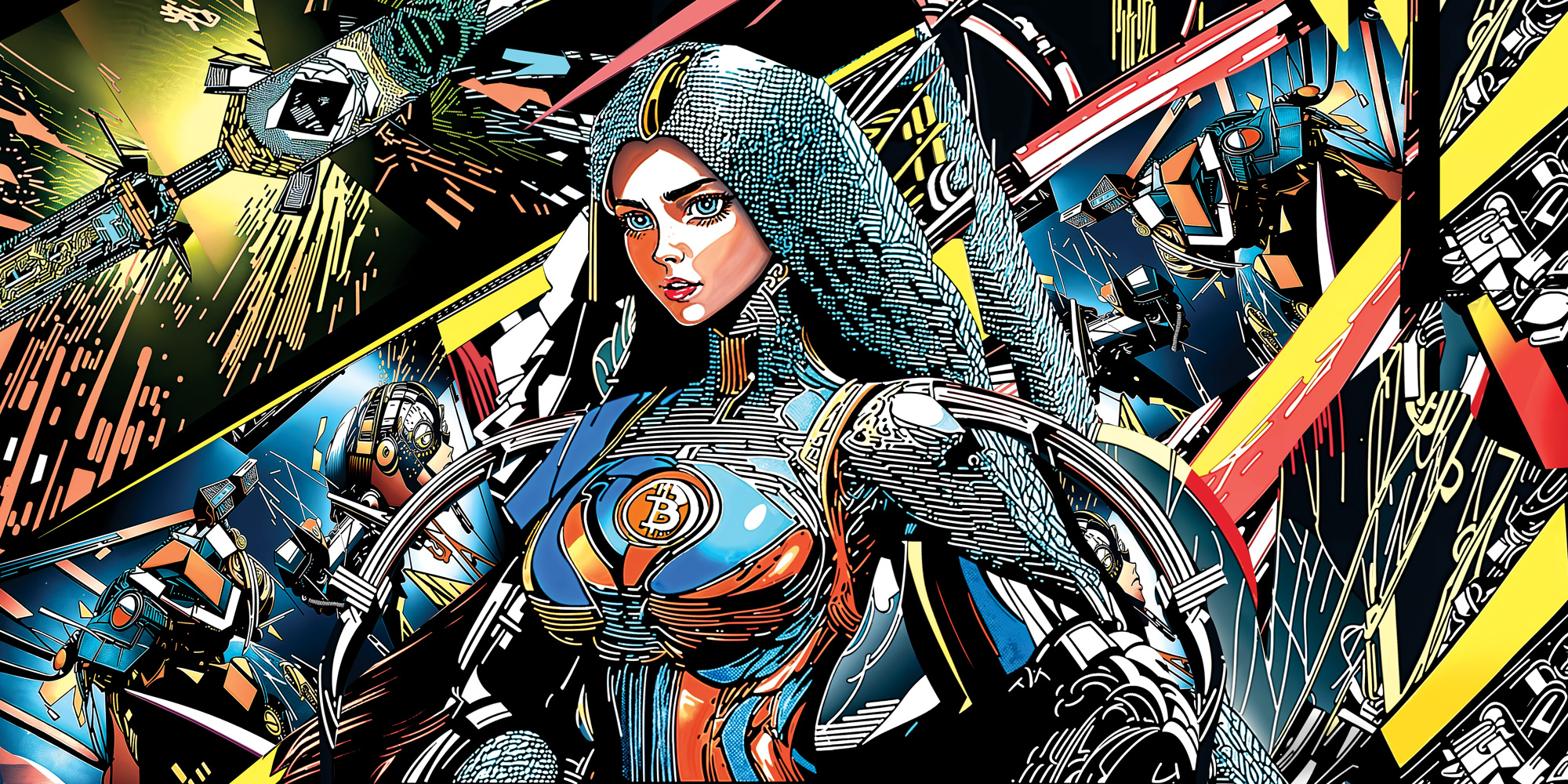ART PIONEERS
June 25, 2013
1BTC:$103.329300
- Artist
- Fact Date
- Fact #
- undefined
- Printing Specifications
- Paper / Stock
- Page Size
The same month that Bitcoin was making in-roads into the city, it was infiltrating the art world. In 2013, a bitcoiner asked Ali Spagnola to create her interpretation of a bitcoin and paid her $50 in BTC for the commission. Eight years later, the founder of the Free Paintings project realised her $50 was now worth $40K. From the very start, the ties between Bitcoin and the artist community ran deep.
Guest Written by Steven Reiss
A Short Bitcoin Art History
From its earliest years, Bitcoin moved more than money. It inspired images, stories, and artworks that turned a monetary experiment into a cultural one. What began as a handful of experiments grew into a living tradition, reflecting ideals of decentralization, permanence, and a refusal to wait for permission. In art-historical terms, Bitcoin art follows traditions like Fluxus, Net Art, Conceptual Art, and activist practice - movements that bypassed traditional institutions and embraced new media as material - but grounds them in a network where money itself is the medium.
The first widely recognised crossover came in 2013, when Pittsburgh artist Ali Spagnola painted a bright ₿ canvas for a fan who sent her $50 in BTC. She forgot about the payment until 2021, when its value had multiplied dramatically. It is remembered not for the price, but for what it signalled: Bitcoin had stepped out of code repositories and into the art world.

Earlier in 2013, Mavensbot’s Bitcoin Wizard (‘Magic Internet Money’) appeared as a Reddit ad (Feb 18) - a blue-robed MS Paint wizard conjuring the ₿, which quickly became a folk emblem on stickers, shirts, and conference banners. Around the same time, illustrator Marcus Connor created the Bitcoin Roller Coaster Guy GIF: a stick figure with a Bitcoin body grinning through wild price swings. Simple, viral, and instantly recognisable. Both became enduring icons of early Bitcoin meme art.
By 2014, Bitcoin had its first curated group show: Computers and Capital at Coinfest Vancouver, curated by Erik H. Rzepka and Wesley Yuen. The year also brought ambitious individual works. French artist Youl painted The Last Bitcoin Supper, replacing Christ with a representation of Bitcoin itself and Judas with a banker; it later sold for about $2,900 on eBay. In Germany, Kuno Goda created This Wall Inspired (200 Bitcoins), a Warhol homage echoing his 200 One Dollar Bills, here using Bitcoin logos as repeating pop icons, priced at 199 BTC and sold privately for an undisclosed sum. Around the same period, conceptual duo Emile Brout & Maxime Marion produced Nakamoto (The Proof) - a high-resolution scan of a supposed “Satoshi Nakamoto passport,” probing identity, myth, and authorship.
Infrastructure soon followed. Platforms like BitPremier (founded in 2013) were already selling luxury goods, including works of art, for BTC. At the end of 2014 in Vienna, Valentin Ruhry and Andy Boot founded Cointemporary (2014-2017), an online gallery where each work was priced in Bitcoin and sales were processed directly on the blockchain.
Bitcoin also went outdoors. The anonymous artist Cryptograffiti covered public spaces with Bitcoin imagery, built mosaics from shredded banknotes, and later experimented with micropayment-funded works. In 2018, Paris muralist Pascal “PBOY” Boyart embedded QR codes into his street art so viewers could tip him directly; one mural drew 0.11 BTC from 23 donors. In January 2019, he hid a Bitcoin prize inside a puzzle mural, merging street art with treasure hunt.
Some artists used the Bitcoin blockchain itself as material. In 2015, German artist Stephan Vogler’s FACES encoded portraits into Bitcoin transactions, treating the blockchain as both exhibition space and proof of authorship. In 2023, Casey Rodarmor’s Ordinals protocol extended this approach, enabling images to be inscribed directly onto individual satoshis. This made it possible for the artwork itself to live permanently on Bitcoin without the need for any physical form.
After just over a decade, the story of Bitcoin art reads like a visual diary of the currency itself. Jokes, disputes, milestones. These artworks have been created in real time, often outside institutions and without permission. Bitcoin has also changed how patronage works, allowing artists to reach supporters directly through its decentralized network, no longer relying on merchants or galleries, but on anyone willing to send a few sats. As a medium, Bitcoin has enabled a new kind of art that can be owned, traded, and even created directly on its network, reshaping how originality and provenance are understood. Whatever direction Bitcoin takes from here, the artworks will remain, each telling its own version of the story as a cultural record of a monetary revolution.
- Artist
- XXXXX
- BTC On this day
- June 25, 2013
- Market Cap
- $1,170,948,293
- Block Number
- 253,594
- Hash Rate
- 143.74 TH/s
- Price Change (1M)
22%
- Price Change (3M)
16%
- Price Change (1Y)
1538%
